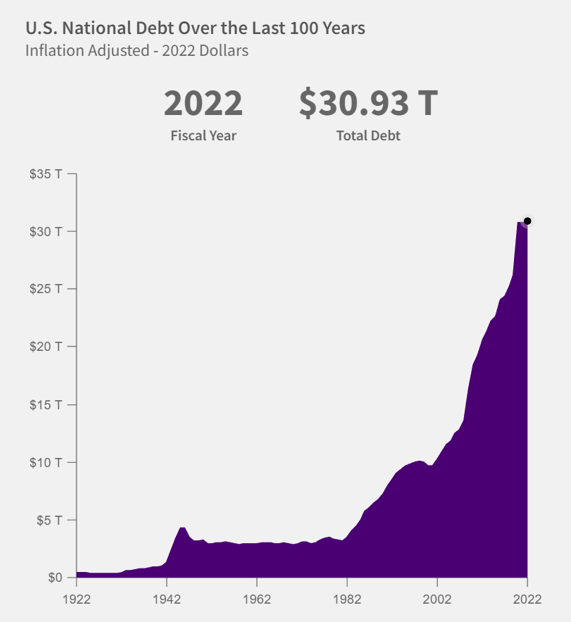20/04/2023
The US’s aim to become carbon neutral by 2050 would cost $50 trillion, according to a prediction from a leading economist in an interview with Senator John Kennedy.
Questioning former head of risk management at Goldman Sachs and climate policy expert Dr Robert Litterman at the Senate Budget Committee hearing in March 2023, Louisiana senator John Kennedy asked: “How much would it cost to make the United States of America carbon neutral by 2050?”
At first, the response came vaguely: “I don’t know.”
Turning to Dr Douglas Holtz-Eakin, another economist, Kennedy posed the same question – to which he responded: “You’re going to look at $50 trillion.”
This round of questioning comes just over a year after President Joe Biden signed an order for the US government to cut the country’s emissions by 65% by the end of this decade, and achieve net-zero by 2050, the Guardian reports.
According to Climate Trade, the US is the second biggest polluter in the world after China – so by all accounts, serious infrastructural change is needed for the country to do its part in lowering world temperatures over the next few decades.
Yet with the US already in serious debt, it’s difficult to conceive how it could confidently commit to its net-zero proposition. And, outside of the US, countless contributing factors call the efficacy of these plans into question, even if they were achieved.
Read on to find out three factors that could affect the US’s aim to reach net-zero by 2050, and the potential impact on both the climate and the world economy.
1. With more than $31 trillion worth of debt already, the US may struggle to pay for its net-zero commitment
As you may imagine, the enormous amount of existing US debt poses a threat to its net-zero plans.
While scientists urge that US carbon emissions need to be reduced, the cost of reconstructing US society to meet these aims sits at approximately $50 trillion. Yet according to the US Treasury, on 11 April 2023 the US was in more than $31 trillion of debt.
After the Revolutionary War, the US was already in approximately $75 million of debt (adjusted for inflation) – but in the last 100 years, the amount owed has skyrocketed.
The below chart shows the trajectory of US debt between 1922 and 2022.

Source: US Treasury
By increasing borrowing to ramp up its carbon neutral plans – even with some of the cost being covered by private dollars – the US faces a rocky fiscal path in the coming decades.
And, if the plan can’t be paid for, it calls into question how key polluting nations are going to play their part in lowering world temperatures overall.
2. A further increase in US debt could change both the domestic and global economic landscape
Within the wider economic landscape of the US (and, in turn, the rest of the world), a potential $50 trillion increase in US debt could have serious ramifications.
Importantly, growing national debt can affect the private sector in a phenomenon known as “crowding out”. When the government sells an increasing number of bonds to the private sector as a borrowing mechanism, the private sector then, in theory, has less to spend privately.
So, an increase in borrowing could lead to stagnating growth across many industries – just one of many side-effects this expensive plan could have.
Some additional consequences of increasing US national debt could be:
- Tax increases
- Spending cuts in other essential areas, such as social security
- Being unprepared to shoulder another crisis such as the 2008 financial crash or the Covid-19 pandemic.
As the coming decades unfold and US debt continues to rise, the impacts on their financial landscape are likely to be widespread – posing some threats to social infrastructure and tax in the country.
3. Without the cooperation of other key nations, America’s climate change targets could be fruitless
When questioned at the Senate Budget Committee hearing in March 2023, Dr Robert Litterman said, “We have to work with the rest of the world. We’re in this together – it’s one world. We can’t build a wall around the United States.”
To this, Kennedy responds, “What if we spend $50 trillion and European democracies cooperate, but India and China don’t?”
Indeed, an important question to be posed around this issue is the question of a global climate activism policy. Even if the US achieves carbon neutrality within the proposed time frame, this progress may be ineffective in lowering world temperatures if other large polluting nations do not play their part.
According to the London School of Economics (LSE), ahead of the November 2021 COP26 climate conference that prompted President Biden to set his 2050 target, China pledged to become carbon neutral by 2060.
Yet with a less than ideal relationship between the US and China, it’s anyone’s guess whether either country will fulfil their promises, especially if the other seems reluctant to participate.
This uncertainty could worry US economists further, and potentially thwart the government’s efforts to push through the infrastructural change needed to lower emissions.
Get in touch
If you have questions about how the global economy could affect your investments – or for a chat about anything you’ve read here – email info@depledgeswm.com or call 0161 8080200.
Please note
This blog is for general information only and does not constitute advice. The information is aimed at retail clients only.

Comments on Can the US meet its $50 trillion net-zero commitment? 3 factors to think about
There are 0 comments on Can the US meet its $50 trillion net-zero commitment? 3 factors to think about